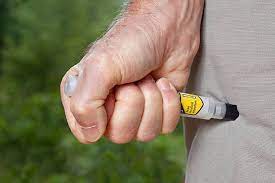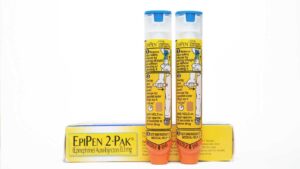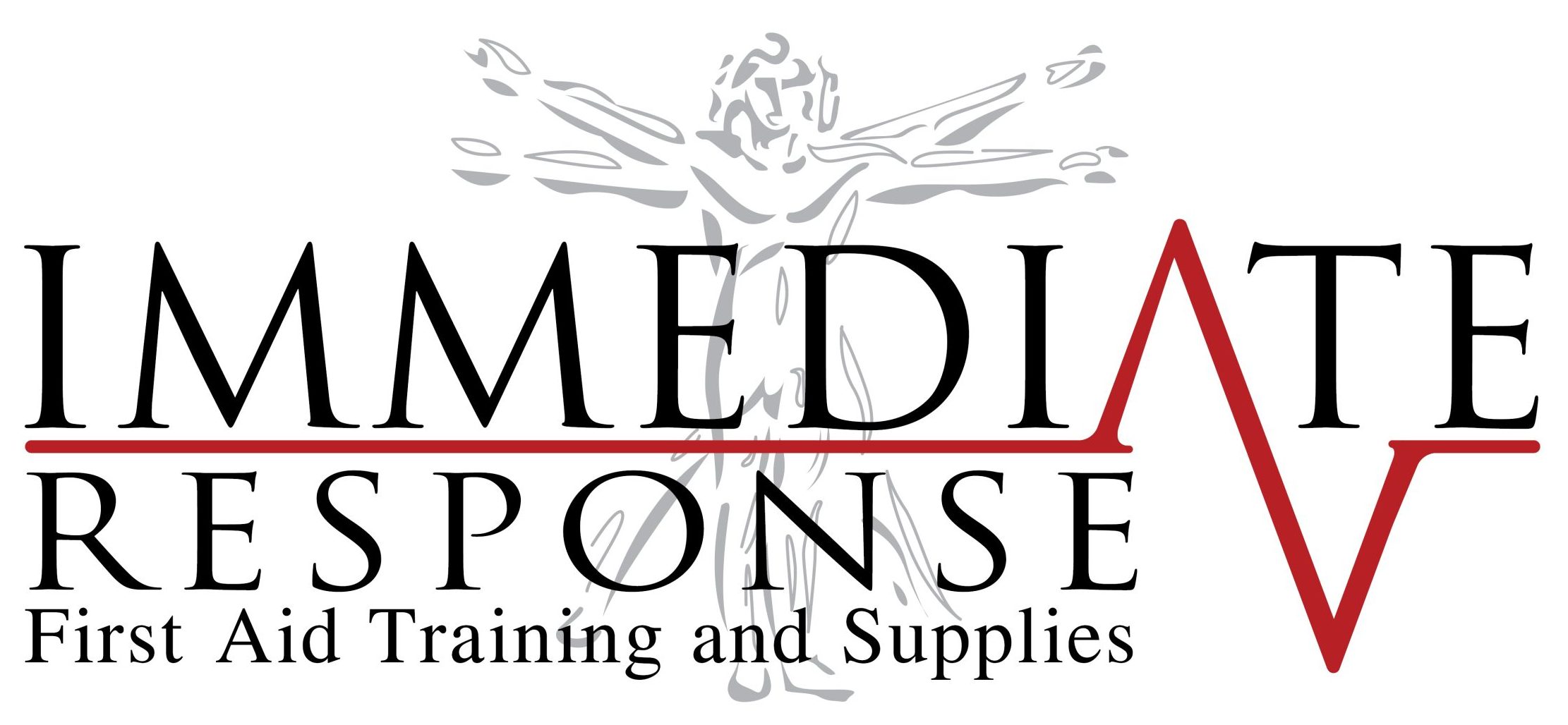Anaphylactic Shock
Anaphylaxis is a life-threatening allergic reaction that involves the entire body. Anaphylaxis may result in shock or death, and therefore requires immediate medical attention. This most severe type of allergic reaction often involves many organs of the body such as:
![]() The skin – welts and hives (urticaria).
The skin – welts and hives (urticaria).
![]() The upper airways – swelling of the throat and vocal cords leading to obstruction in breathing.
The upper airways – swelling of the throat and vocal cords leading to obstruction in breathing.
![]() The nose – sneezing, blocking, watering, runny nose.
The nose – sneezing, blocking, watering, runny nose.
![]() The lung – wheezing and asthma.
The lung – wheezing and asthma.
![]() The circulatory system – a fall in blood pressure and collapse.
The circulatory system – a fall in blood pressure and collapse.
Some triggers include:
![]() Foods (especially nuts, seafood, eggs, cow’s milk, soy, wheat).
Foods (especially nuts, seafood, eggs, cow’s milk, soy, wheat).
![]() Drugs (antibiotics, x-ray contrast dyes).
Drugs (antibiotics, x-ray contrast dyes).
![]() Venom of stinging insects (bees, wasps, ants).
Venom of stinging insects (bees, wasps, ants).
![]() Herbal remedies (Royal Jelly).
Herbal remedies (Royal Jelly).
![]() Latex.
Latex.

In some cases, anaphylaxis is preceded by signs of a mild to moderate allergic reaction.
For insect allergies, these can be signs of anaphylaxis.
Symptoms of severe allergic reaction or anaphylaxis may include:
![]() Abdominal cramping or pain
Abdominal cramping or pain
![]() Diarrhea
Diarrhea
![]() Nausea and/or vomiting
Nausea and/or vomiting
![]() Pain or tightness in the chest
Pain or tightness in the chest
![]() Difficulty talking and/or hoarse voice
Difficulty talking and/or hoarse voice
![]() Difficulty swallowing
Difficulty swallowing
![]() Difficulty and/or noisy breathing
Difficulty and/or noisy breathing
![]() Wheeze or persistent cough
Wheeze or persistent cough
![]() Fear or anxiety
Fear or anxiety
![]() Heart palpitations
Heart palpitations
![]() Flushing of the face
Flushing of the face
![]() Swelling of the face, eyes, or tongue
Swelling of the face, eyes, or tongue
![]() Dizziness or vertigo
Dizziness or vertigo
![]() Weakness
Weakness
![]() Loss of unconsciousness
Loss of unconsciousness
![]() Pale and floppy (young children)
Pale and floppy (young children)

![]() Follow the DRSABCD emergency action plan.
Follow the DRSABCD emergency action plan.
![]() For insect allergy, flick out the sting if it can be seen (but do not remove ticks).
For insect allergy, flick out the sting if it can be seen (but do not remove ticks).
![]() Stay with the casualty and reassure.
Stay with the casualty and reassure.
![]() Give medications if prescribed (whilst antihistamines may be used to treat mild to moderate allergic reactions, if the reaction progresses to anaphylaxis then adrenaline is the only suitable medication).
Give medications if prescribed (whilst antihistamines may be used to treat mild to moderate allergic reactions, if the reaction progresses to anaphylaxis then adrenaline is the only suitable medication).
![]() Locate adrenaline auto-injector if available (instructions are included in the Action Plan for Anaphylaxis which should be stored with the adrenaline auto-injector: EpiPen/AnaPen).
Locate adrenaline auto-injector if available (instructions are included in the Action Plan for Anaphylaxis which should be stored with the adrenaline auto-injector: EpiPen/AnaPen).
![]() Contact parent/guardian or other emergency contact.
Contact parent/guardian or other emergency contact.
Give the adrenaline auto-injector if available (instructions are included in the ASCIA Action Plan for Anaphylaxis, stored with the adrenaline auto-injector)
![]() Follow the DRSABCD emergency action plan.
Follow the DRSABCD emergency action plan.
![]() Lay person flat and elevate legs – if breathing is difficult, allow them to sit but do not stand.
Lay person flat and elevate legs – if breathing is difficult, allow them to sit but do not stand.


![]() Further adrenaline doses may be given (when an additional adrenaline auto-injector is available), if there is no response after five minutes.
Further adrenaline doses may be given (when an additional adrenaline auto-injector is available), if there is no response after five minutes.
![]() If in doubt, give the adrenaline auto-injector.
If in doubt, give the adrenaline auto-injector.
![]() Adrenaline is life saving and must be used promptly. Withholding or delaying the giving of adrenaline can result in deterioration and death. This is why giving the adrenaline auto-injector is the first instruction on the ASCIA Action Plan for Anaphylaxis. If cardiopulmonary resuscitation (CPR) is given before this step there is a risk that adrenaline is delayed or not given.
Adrenaline is life saving and must be used promptly. Withholding or delaying the giving of adrenaline can result in deterioration and death. This is why giving the adrenaline auto-injector is the first instruction on the ASCIA Action Plan for Anaphylaxis. If cardiopulmonary resuscitation (CPR) is given before this step there is a risk that adrenaline is delayed or not given.

![]() In the ambulance, oxygen will usually be administered to the casualty by ambulance personnel.
In the ambulance, oxygen will usually be administered to the casualty by ambulance personnel.
![]() Medical observation of the casualty in hospital for at least four hours is recommended after the use of adrenaline and treatment of anaphylaxis.
Medical observation of the casualty in hospital for at least four hours is recommended after the use of adrenaline and treatment of anaphylaxis.
![]() Adrenaline auto-injectors available in Australia and New Zealand are EpiPen and AnaPen. The Junior versions of EpiPen and AnaPen are generally prescribed for children aged one to five years.
Adrenaline auto-injectors available in Australia and New Zealand are EpiPen and AnaPen. The Junior versions of EpiPen and AnaPen are generally prescribed for children aged one to five years.
![]()
If the allergic reaction is due to either a bee, wasp or ant sting and there is no EpiPen/AnaPen available use the Pressure Immobilisation (Bandaging) Technique for snakebite treatment.
![]()
For further information on anaphylaxis visit:
Australasian Society of Allergy and Clinical Immunology (ASCIA)

